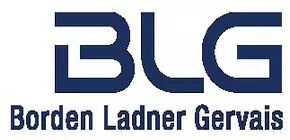- with Senior Company Executives, HR and Finance and Tax Executives
- in Canada
- with readers working within the Accounting & Consultancy, Banking & Credit and Insurance industries
This summer, the Ontario Securities Commission (OSC) released OSC Staff Notice 33-759 Registration, Inspections and Examinations Division 2025 Annual Report. Our readers will be most interested in Part 2 of the report, which is often described as a "self assessment tool" for registrants on their compliance systems and controls.
The report notes that the 2024 exam of high risk firms was based on information collected from the risk assessment questionnaire, and that a firm may be ranked as "high risk" based on factors such as the firm's business activities, high dollar values for assets under management, the number of compliance staff relative to the amount of AUM, and the number of clients or type of clients serviced by the firm.
While much of the report serves as a reminder of current staff guidance and expectations, we have pulled out a few points of interest. With respect to net asset value (NAV) errors, staff expects that when errors are identified, including those below the materiality threshold set by the relevant investment fund manager, the managers are expected to review their procedures to determine if there are gaps which led to the NAV error, and fix controls where needed.
We have always encouraged firms to utilize a conflicts of interest inventory, and the report describes in detail the type of information which should be included in this inventory, including the firm's assessment for concluding why a specific conflict is material (including the criteria used in the assessment), as well as who at the firm was involved in identifying the conflict and making the materiality assessment. In addition to describing the controls the firm has in place to manage each material conflict of interest in the best interests of clients, it is important to note how the controls are sufficient. Firms are also encouraged to have their Chief Compliance Officer regularly report on material conflicts of interest to the firm's Ultimate Designated Person, executive management, and the board.
A number of specific conflicts were called out in the report. As an example, exempt market dealers that held client cash in trust accounts that earn interest were deficient in not identifying such activity as a material conflict of interest. It was noted that controls are needed to minimize the time for holding cash balances in trust, or such activities should be avoided by paying out interest to clients or ensuring that the trade settlement process does not require the administration of a trust account. When client cash is held as a result of redemptions or distributions, it could be an issue if the cash is held longer than anticipated and a suitability analysis is not performed.
With respect to exempt trades, the report noted that exempt market dealers are responsible for complying with prospectus exemptions. Staff indicated, for example, that they found in their reviews exemption limits that are part of the conditions for use for the offering memorandum prospectus exemption were not adhered to, and that the family, friends, and business associates prospectus exemption was not properly documented.
Some firms did not properly inform the OSC of developments in legal actions subsequent to the initial filing, including newly filed defences, counterclaims, third-party claims, amendments, appeals and settlements.
The OSC intends to release a further report on the activities undertaken by the Registrant Conduct Team. The CSA and CIRO report on their review of KYC, KYP and suitability determination requirements is also expected to be published later this year. We can also expect to see further publications on the use of Digital Engagement Practices before the end of the year. A busy fall is indeed ahead.
You can read additional insights on this report in BLG's article.
The content of this article is intended to provide a general guide to the subject matter. Specialist advice should be sought about your specific circumstances.


